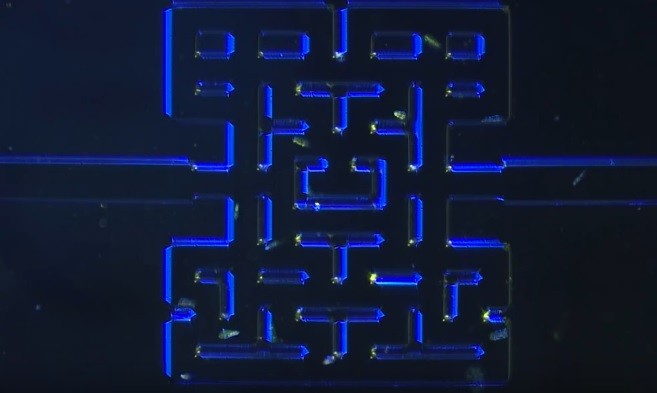Scientists have developed a real life game of Pac Man using microscopic organisms, in order to further study predator and prey relationships in the natural world.
Using a map based on Pac Man, researchers created a three dimensional organic maze with small channels as nutrient rich liquid flows through these microscopic passageways, that is also teeming with different kinds of micro organisms.
In this organic game of Pac Man, the unicellular organisms known as euglena act as Pac Man, where the larger multicellular species are known as rotifers serve as the ghost predators searching for Pac Man. However, unlike the video game, this organic maze does not possess any power enhancing pills in which, this experiment demonstrates an endless hunt by the rotifers for this single cell protozoa.
This new study is carried out by researchers to analyze and examine how euglena survives when given this type of situation, as they are being chased down by rotifers which measure less than one millimeter in diameter.
Since microscopic organisms are often observed under a petri dish, this 3D view inside a labyrinth reveals how organisms interact in their environment, as they navigate through the wild. According to Erik Andrew Johannessen of the Institute of Micro and Nano System Technology at the University College Southeast in Norway ,this Pac Man project allows them to reveal the results of the study in easier to understand terms.
Apart from this, the team also sought out the help of film director Adam Bartley lyslagt to create this 3D map and film this natural gameplay for the public using micro scenography.
Even if microorganisms are so tiny, their abundant presence on Earth is indicative of how life on the planet evolved as they are also the oldest living life forms. By studying these creatures, scientists can obtain solutions to apply in healthcare, environmental issues and other industrial approaches, such as creating safer commercial food products.



























